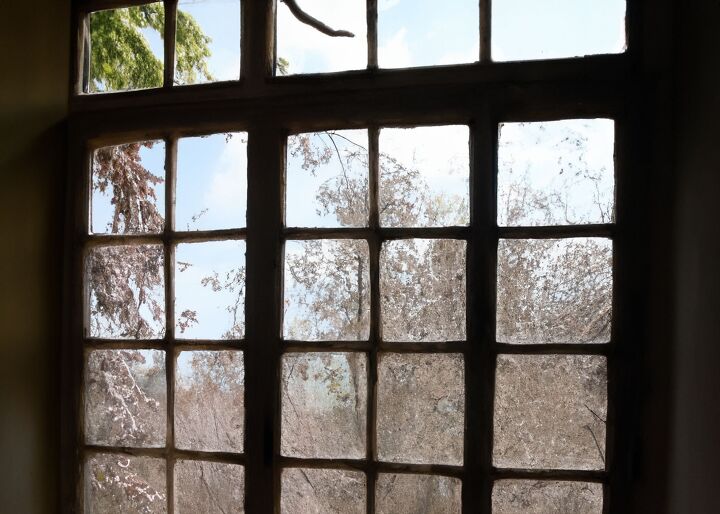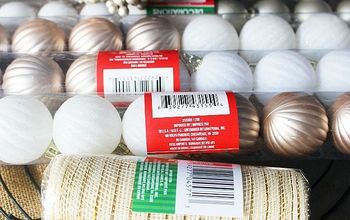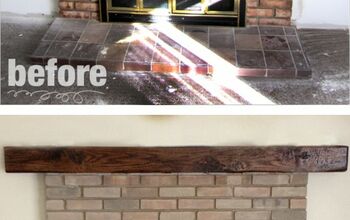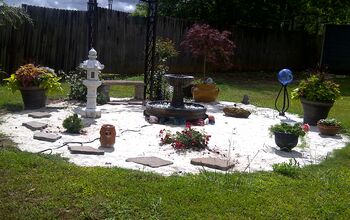How to Clean Cloudy Glass Windows When Nothing Else Works

Keep reading to find out how to get cloudy windows clean so they sparkle again, whether that means cleaning the exterior of the window or removing the moisture between your window panes.
Windows serve the grand purpose of bringing in natural light while offering a view of the outside world.
Over time, the buildup of dirt and grime hinders the clarity of the glass, resulting in a less-than-attractive appearance and obstructing your view of the great outdoors. Despite your best efforts to wipe the windows clean, you may notice they continuously appear hazy.
There are a few possible reasons why your window clarity is hindered, which we’ll cover in this guide. We'll also address when it might be best to call in a professional to help.
Disclaimer: Hometalk may receive a small affiliate commission from purchases made via Amazon links in this article but at no cost to you.
What Causes Cloudy Glass Windows?
No matter how many times you Windex your glass windows, there still seems to be a misty appearance left behind long after the windows dry. Why?
There are a few reasons behind what causes cloudy windows:
- Temperature differences between the interior and exterior of your home can result in condensation from humidity collecting on the surface of a window and forming a hazy appearance that takes a little more effort to get off.
- As moisture condenses and evaporates, deposits on the glass create clouds.
- Double-pane windows are made up of two panes, or pieces of glass. This creates a space between each pane of glass. If it appears that there’s haze in that space between the panes of your window, you may have a seal leakage. Unfortunately, the best fix for this is to replace your windows.
How to Clean Cloudy Glass Windows
Cleaning cloudy window glass is a simple process, so long as it really is just buildup on the interior or exterior of the window from condensation deposits, dust, or pollen. With a little soap, water, and vinegar, your windows should regain their clarity in no time!
Tools and Materials Needed
Step 1: Create Cleaning Solution
In a spray bottle, combine two cups of water, two cups of white vinegar, and five drops of liquid dish soap.
Step 2: Apply the Solution to the Window
Spray the solution onto the window glass facing the exterior of your home, then use a dry microfiber cloth to wipe it away. As you wipe, use large, circular motions to remove the haze.
Step 3: Polish
Although optional, polishing the glass will make for an even clearer appearance. Apply a glass polishing compound to the window with a microfiber cloth. Use a circular motion to apply polish to the entire window. Then, use another microfiber cloth to buff it out.
Step 4: Repeat
Repeat Steps 1-3 on the exterior side of the window you're trying to remove the haze from.
If this cleaning method didn't help clean cloudy windows, the cause may lie in the space between the window panes. Find out how to fix moisture between window panes in the next section.
How to Remove Moisture from Between Window Pane
If you want to try cleaning the fog without following through with a complete disassembly of the window, one option is to drill small holes into the interior side of the glass. This will allow air to flow through and break up the trapped moisture and the shining sun to dry up condensation.
Risk Warning
Drilling through glass, if done incorrectly, can be dangerous and cause cracks in the glass. Be sure that before you start, you put on a pair of safety glasses or goggles in case drilling releases any glass particles into the air.
Also, when drilling, continuously spray the drill bit with cold water and work very slowly and carefully to ensure that the glass doesn't crack.
Tools and Materials Needed
- Safety glasses
- Drill
- ⅛-inch drill bit
- Spray bottle with cold water
Step 1: Drill a Hole In the Upper Corner of the Windowpane
Use your ⅛-inch bit to drill a hole in the top corner of the windowpane, spraying the drill bit with cold water as you drill to keep the bit cool. This will prevent the glass from cracking as you drill. Take your time here; don’t rush the job or put too much pressure on the glass.
Step 2: Drill Another in the Lower Corner of the Windowpane
Drill another ⅛-inch hole in the lower corner of the windowpane, diagonal from the first hole. Be sure to spray the drill bit as you did for the top corner of the windowpane and take your time.
Step 3: Keep Holes Open for Ventilation
Keep the holes open to allow ventilation between the panes. When you need to close off the vents, cover the holes with a piece of tape.
Tips and Hacks for Difficult Cases
If you’ve tried the above method to rid clean hazy glass windows to no avail or you don't want to drill holes in your windows, the answer to how to fix cloudy glass windows might be replacing them or resealing them.
Resealing windows involves, removing the seal and cleaning each piece of glass with a glass cleaner or with the polishing solution we included in the above section, How to Clean Cloudy Windows. Be aware, though, that this is a delicate process.
Removing the seal without breaking the pane of glass and resealing the window without allowing in moisture can be tough. We recommended calling in a window specialist for this task.
How to Prevent Cloudy Glass Windows
Ventilation is key in preventing cloudy glass windows. Promote good air circulation throughout the home with the use of fans. Even during the winter, running fans will help prevent warm air and condensation from sticking to your windows.
A dehumidifier is especially helpful for getting rid of moisture from the air that can get trapped in window panes. Every few months, examine your windows, sash (the part of a window that moves and holds glass panes together), and seals, checking for any signs of leakage.
Cleaning Cloudy Glass Windows
Do you have additional tips for cleaning cloudy glass windows and how to prevent them from getting foggy again? Share them below!
Enjoyed the project?
Comments
Join the conversation
-
 Patrice
on May 26, 2023
Patrice
on May 26, 2023
I clean mine like this pressure wash near me
-































Frequently asked questions
Have a question about this project?